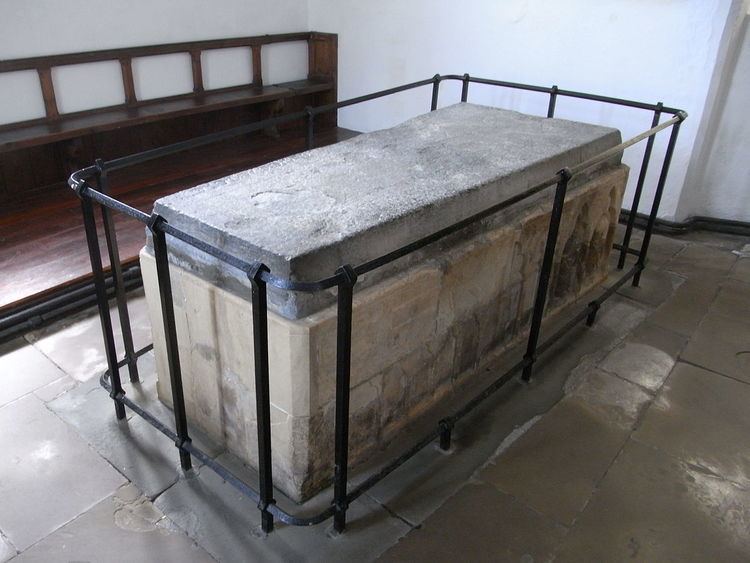Local time Sunday 6:49 AM | ||
 | ||
Weather 9°C, Wind W at 34 km/h, 94% Humidity | ||
Woolacombe beach mortehoe beach north devon 2016
Mortehoe is a village and former manor on the north coast of Devon, England. It lies 10 miles north-west of Barnstaple, near Woolacombe and Lee Bay, and is sited in a valley within the hilly sand-dune-like land behind Morte Point. The parish population at the 2011 census was 1,637.
Contents
- Woolacombe beach mortehoe beach north devon 2016
- Map of Mortehoe Woolacombe UK
- Drive through mortehoe and woolacombe devon
- Geology
- Transport links
- Places of interest
- Parish church
- de Tracy tomb
- References
Map of Mortehoe, Woolacombe, UK
Mortehoe can trace its origins back to the Domesday Book, and beyond. Always a farming community, in former years it was a base for smugglers and wreckers. Since the coming of the railway, notably the Ilfracombe Branch Line, Mortehoe has become much more dependent on tourism, with numerous camp sites and Holiday camps in the vicinity.
Drive through mortehoe and woolacombe devon
Geology
Mortehoe, like most of the surrounding area, is built on a band of Devonian Slates, Sandstones and Igneous rocks such as Basalt. This gives the area a rugged and rocky quality which is typical of North Devon.
Transport links
Mortehoe may be reached by road from two directions: either a steep, narrow lane (20% Gradient) that follows the hilly coast north from Woolacombe; or else a twisty, narrow road from the east. There are regular bus services from Woolacombe and Ilfracombe.
The popularity of this remote corner of Devon was boosted by the coming of the railway in 1874. However, Mortehoe station was nearly two miles inland from the village, so Mortehoe was rather less affected by the additional population than its now much larger neighbour, Woolacombe. The Ilfracombe Branch Line railway closed in 1970.
Places of interest
The Mortehoe Heritage Centre, based in the Cart Linhay building. On the upper floor is a museum of the history of the most north-westerly tip of North Devon. The museum has displays about the local farming communities, the railway, and the numerous shipwrecks that occurred off the treacherous rocks around the nearby coast. The rebuilding of the heritage site was managed by surveyor, and later landlord, Douglas Victor Watkins.
Bull Point Lighthouse is a short walk along the South West Coast Path from the centre of the village, and Morte Point is also easily accessible.
Parish church
The oldest parts of the Anglican church of St Mary date back to Norman times, but it has been added to in subsequent years. The bell tower, carved pews and the de Tracy tomb (see below) are medieval. The chancel-arch mosaic and the 'archangel' window were designed by Selwyn Image. The later parts of the building are of the 14th and 16th centuries. The carved bench-ends are 13th century, the wagon roof of the nave 15th century and the chest tomb of William de Tracey, Rector of Mortehoe has been dated to 1322.
de Tracy tomb
The tomb in the south transept has a ledger-line inscription to a certain "Sir William de Tracy". The upper slab of black or dark grey granite or marble is incised with the life-size figure of a priest in full vestments, holding a chalice to his breast. The inscription is much defaced, but was recorded by Tristram Risdon (d.1630):
"On whose mangled monument I found this fragment of a French inscription, in this ancient character: 'Syree Williame de Trace...Il enat eeys-Meercy'".
Possibly a variant of such phrase as que Dieu ait mercy de son âme ("may God have mercy on his soul"). On the north side of the base of the tomb are sculpted in relief three escutcheons, now devoid of any colourings, listed from east to west :
On the same north side of the base at the west end, beneath plain canopies, are effigies representing possibly St. Catherine with her wheel, and St. Mary Magdalene, with long flowing hair. The south side of the tomb-base is divided into seven compartments, filled with Early Decorated gothic tracery; the Crucifixion forms the subject of the relief sculpture at the west end of the tomb-base, showing Christ on the cross with two standing figures either side.
Lord Sudeley insists this is the tomb of William de Tracy who is known to have been the incumbent of this church, endowed a chantry at Mortehoe in 1307/8, and died in 1322. The priest is described as 'Sir' because this was an oft-used prefix for priests in medieval times. It is unclear what family relationship, if any, this man had to William de Tracy (d.post 1172), the notorious co-assassin of Archbishop Thomas Becket (d.1170).
